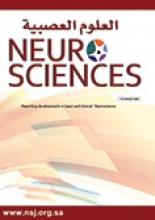Millions of people worldwide sit at a desk all day, and over recent years this has led to increased levels of physical inactivity in the work place. Health experts have warned that long periods of sitting can increase the risk of heart disease and obesity. There are a number of different approaches to reduce the amount of time we spend sitting down while at work. One option that is increasing in popularity is the sit-stand desk. These are desks that are designed to allow you to work at your desk sitting down or standing up.
A team of Cochrane researchers updated a systematic review that looked at the effects of different strategies to encourage people to reduce the amount of time they spend sitting at work. They looked at twenty studies with a total of 2,174 participants from the US, the UK and Europe. They included evidence from both randomised and non-randomised studies.
Although sit-stand desks are popular, their potential health benefits are very uncertain. The researchers found very low quality evidence from three non-randomised studies and low quality evidence from three randomised studies, with 218 participants, that people who used them sat between 30 minutes and two hours less, compared to when they used conventional desks during the working day. Sit-stand desks also reduced total sitting time, both at work and outside work, and the durations of sitting episodes that last 30 minutes or longer. Standing more did not produce harmful effects in the studies, such as musculoskeletal pain, varicose veins or a decrease in productivity.
Other interventions aimed at reducing inactivity such as taking a walk during breaks at work didn’t change the length of sitting time at work. The authors found low quality evidence that counselling may lead to a modest reduction in sitting time, (around 30 minutes on average). The researchers found a number of limitations in the included studies that reduced their confidence in the validity and applicability of the results from the trials. The quality of evidence was low for most of the interventions looked at, mainly because the studies were poorly designed and recruited small numbers of participants.
The study’s lead author, Nipun Shrestha from the Health Research and Social Development Forum, Thapathali, Nepal, commented: “This Cochrane Review shows that, at the moment, there is uncertainty over how big an impact sit-stand desks can make on reducing the time spent sitting at work in the short term. There is also low quality evidence of modest benefits for other types of interventions. Given the popularity of sit-stand desks in particular, we think that people who are considering investing in sit-stand desks and the other interventions covered in this review should be aware of the limitations of the current evidence base in demonstrating health benefits. We need further research to assess the effectiveness of different types of interventions for reducing sitting time in workplaces in both the short and long term. The evidence base would be improved with larger studies, longer follow-up and research from low income countries.”
Co-author Jos Verbeek, from the Cochrane Work Review Group, Kuopio, Finland, said, “It is important that workers who sit at a desk all day take an interest in maintaining and improving their well-being both at work and at home. However, at present, there is not enough high quality evidence available to determine whether spending more time standing at work can repair the harms of a sedentary lifestyle. Standing instead of sitting hardly increases energy expenditure, so we should not expect a sit-stand desk to help in losing weight. It’s important that workers and employers are aware of this, so that they can make more informed decisions.”
Full citation: Nipun Shrestha, Health Research and Social Development Forum, Thapathali, Kathmandu, 24133, Nepal. E-mail: drnipunsth{at}gmail.com. Cochrane Database of Systematic Reviews 2016, Issue 1. Art. No.: CD005992. DOI: 10.1002/14651858.CD005992.pub3.
Copyright © 2016 The Cochrane Collaboration. Published by John Wiley & Sons, Ltd., reproduced with permission.
- Copyright: © Neurosciences
Neurosciences is an Open Access journal and articles published are distributed under the terms of the Creative Commons Attribution-NonCommercial License (CC BY-NC). Readers may copy, distribute, and display the work for non-commercial purposes with the proper citation of the original work.






